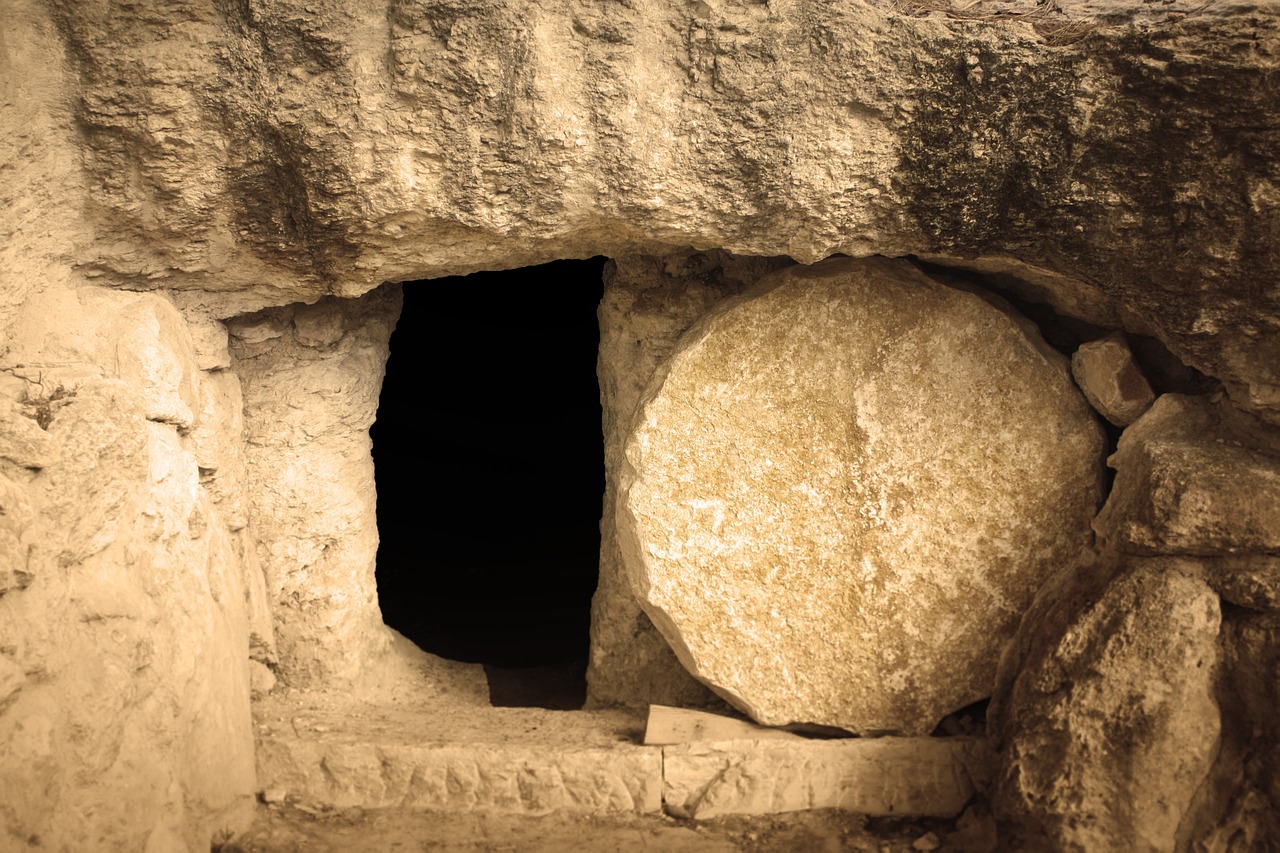Is there any historical evidence that Jesus rose from the dead?
There is – and the event is surprisingly well-attested. There are plenty more points where these came from, but today, we’re just going to touch on our favorite five:

Evidence of the Empty Tomb from Hostile Sources
The Jewish people in Jesus’ time were, by and large, not big fans of his. It was the chief priests at the time who were interested in having him executed, and afterward, the same group of people collectively admitted the tomb was empty.
Take for example the Dialogue with Trypho, a work from the second century written by Justin Martyr. In it, he records that a letter circulating among the Jewish community admits that:
- The Jews were the ones who caused Jesus to be crucified
- Their explanation for the empty tomb was that the disciples must have stolen the body

In Matthew’s account, which later of course became a part of the Bible, he states the same (Matthew 28:13-15). Mark’s account, also of course now a part of the New Testament, uses a source on the empty tomb that, just by process of elimination, must date within a decade of the event that it describes…a time difference from event to record so small that we just don’t see that sort of thing in ancient history except on extremely rare occasions.
And, a few centuries later, (still closer to the event than most ancient historical accounts; see this post!) the Toledoth Yeshu, another Jewish writing, admits that the tomb was empty but suggests that the gardener moved the body.
Simply put – it’s quite well documented that the tomb was empty, no one could produce the body, and no one could successfully explain it away with any naturalistic explanation.
Published Lists of People Who Saw Jesus
If there were a false a story on the news channels that had the names of very specific people–prominent people, even–would that story last too long in public circulation?

Absolutely not, as the people mentioned in it would take action to protect their reputation.
And in the time right after Jesus’ death and resurrection, the same was true in society. People didn’t want to be defamed, and their form of a published news story was a circulating letter (such as what 1 Cor 15:5-8 is an excerpt from) that went from place to place.
The people who saw Jesus and were mentioned in the circulating lists apparently didn’t object, seeing as there are zero competing traditions. What historians generally accept, then, is that those people, then, at the very least, tacitly agreed that indeed they did believe they saw the risen Jesus.
Jesus’ Unusual Burial Well-Attested
His body wasn’t left on the cross as was common practice at the time. The biblical accounts are ancient historical documents that later made it into the Bible…the exact same TYPE of document that we rely on for all of ancient history.
Even secular scholars admit this…
But why does the everyday common person have trouble with this? Does the fact that Christians circulated them negate their veracity? Does the fact that they later were canonized into the Bible make the words within them less true? (see more on this topic)
Not at all. And within these accounts, we have another name drop: Joseph of Arimathea. He was a pretty rich and influential guy, so what was said above about people tending to defend their reputations against slander rings true here too: Joseph of Arimathea here never contested the accounts written about him letting Jesus use his tomb, and no competing tradition from the same time period exists.

The Bible Accounts Contain Embarrassing Details
If you were a writer of myths creating the version of events you merely wished to be true, would you include, in a myth, any of the embarrassing true details? Or would you skip those?
The same question must be posed when we consider the biblical accounts. Were they recording history, as they claim, or mere wishful thinking?
These accounts, again, are the exact same type of documents that we rely on for all of ancient history…except closer to the events they describe and with more early copies.
And, these accounts contain embarrassing details, such as the inconvenient fact that women discovered the tomb.
Why was that embarrassing? In the first century, women were thought to be so untrustworthy that they could not act as witnesses in a court case. The word of a woman was considered worthless. But, nevertheless, the Bible admits that women, not men, and not even the male disciples, were the initial discoverers of the tomb, among other embarrassing details.
Disciples’ Radical Transformation
The disciples were running for their lives and hiding in closed upper rooms after Jesus’ death, just waiting to be found, accused of collaborating with Jesus, and being executed for these associations…until, of course, Jesus came back!

These men were all tortured, and most suffered painful deaths…treatments that could have easily been avoided if they would have recanted their claims that Jesus rose from the dead.
So, why did these men, scared for their lives, go on to boldly face painful deaths?
If nothing else, secular historians generally agree that there was something that made THEM believe the resurrection was genuine. And, of course, we would add that of course, it is!
Do you believe Jesus rose from the dead? Here’s what to do next…
